Our feet are the unsung heroes of our physique, supporting us in every step we take. Frequently, these issues remain inconspicuous until complications arise. We use them every day to walk, run, stand, and carry out various activities, yet we rarely give them the attention they deserve. As a result, many individuals experience common foot deformities that can significantly impact their daily lives. It is crucial to be aware of these deformities in order to maintain proper foot health and prevent the discomfort and pain associated with them. Being aware of common foot deformities can help us identify potential issues early on and seek appropriate treatment. This awareness can also aid in adopting preventive measures to avoid developing such deformities altogether. An understanding of common foot irregularities and their indicators empowers us to embrace proactive measures. It is crucial to appreciate that investing a modicum of attention in our foot welfare today can yield enduring comfort and an active tomorrow.
Common Foot Deformities and Their Impact on Our Daily Life
Flat feet
If you’ve ever noticed your arches collapsing or your soles almost touching the ground, you may have flat feet. This condition can be congenital or acquired, stemming from various factors. If you experience foot pain or struggle to find properly fitting shoes, it’s essential to address these issues early on.
Common causes of flat feet include:
⦁ Some individuals are simply born with a predisposition to flat feet due to their family history.
⦁ Excessive weight or obesity can also contribute to the development of flat feet.
⦁ Injuries to your foot or ankle, like fractures or sprains, can result in flat feet.
⦁ Weak foot muscles, particularly the muscles that support your arches, can contribute to flat feet.
⦁ Certain medical conditions, like rheumatoid arthritis and diabetes, can also be associated with the development of flat feet.
Common symptoms of flat feet include:
⦁ You may experience foot pain or discomfort.
⦁ Finding properly fitting shoes may be challenging for you.
⦁ You might feel tiredness or achiness in your feet after prolonged activities.
Hollow Feet
If you have ever noticed your foot arches rising to exceptional heights, resulting in a unique curve or a hollow-like appearance, you may be experiencing the condition known as hollow feet or cavus feet. This condition is the opposite of flat feet, where the arches of your feet are exceptionally high, leading to an excessive amount of weight being distributed on the ball and heel of your foot.
Common causes of hollow feet include:
⦁ If a family member has high arches, there is a higher likelihood of you inheriting the condition.
⦁ Damage to your spinal cord can affect the nerves responsible for foot movement and muscle control, resulting in high arches.
⦁ Imbalances in the muscles of your foot can cause the arch to become excessively raised.
⦁ Loose ligaments can contribute to the development of your hollow feet.
⦁ Injuries to your foot, such as fractures or sprains, can result in the formation of a high arch during the healing process.
Individuals with hollow feet may experience the following symptoms:
⦁ You may experience foot pain or instability.
⦁ Your toes may develop a claw-like appearance, curling downward.
⦁ You might have frequent ankle sprains or instability.
Bunions
Bunions, medically known as hallux valgus, constitute a prevalent foot condition that affects millions of people worldwide. This condition manifests as a bony deformity that forms at the base of the big toe. It occurs when the joint at the base of the toe becomes misaligned, causing the big toe to point towards the other toes. This condition often leads to the development of a large bump on the side of the foot. Bunions can cause significant discomfort and pain, affecting one’s mobility and independence, and making it difficult to perform regular activities.
Contributors to bunion formation include:
⦁ A family history of bunions increases the likelihood of developing them.
⦁ Tight shoes, narrow shoes, and high heels can cause bunions over time.
⦁ Participation in activities that excessively stress the foot, such as running or dancing, may contribute to bunions.
⦁ Tight or loose tendons can influence foot alignment, elevating the risk of bunions
⦁ Hormonal imbalances may contribute to bunions.
Common signs associated with bunions encompass:
⦁ Persistent pain and tenderness around the affected area
⦁ Swelling and redness at the base of the big toe
⦁ Formation of corns or calluses on the bunion.
⦁ Restricted range of motion in the affected toe.
Hammertoes
Hammer toes, characterized by the abnormal bending of the second, third, or fourth toes, represent a frequent foot ailment. This condition may arise from various factors, including the use of ill-fitting shoes, muscle imbalances, or specific medical conditions. Addressing symptoms such as pain, corns, calluses, or limited toe movement is imperative. Choosing footwear with adequate arch support can markedly alleviate these concerns.
Factors contributing to hammer toe formation include:
⦁ Genetic predisposition significantly influences hammer toe development.
⦁ Muscle and ligament imbalances surrounding the toes can lead to hammer toe formation.
⦁ Toe injuries may contribute to the development of hammer toes.
⦁ High heels, in particular, can increase the risk of developing.
⦁ Shoes lacking proper arch support may contribute to hammer toe formation.
Symptoms commonly associated with hammer toes include:
⦁ Experience pain and discomfort, especially with tight footwear or extended walking.
⦁ Due to constant friction against shoes, corns and calluses may form on the tops or tips of the affected toes.
⦁ Constraint the movement of the affected toes, making it challenging to flex or straighten them fully.
Plantar fasciitis
If you’ve ever experienced a piercing pain in the bottom of your heel or the arch of your foot, you may be contending with plantar fasciitis. Various factors contribute to this condition, including excessive foot pronation (commonly known as flat feet), elevated arches, inappropriate footwear, overuse or repetitive strain on the feet, obesity, and tight calf muscles.
Contributors to plantar fasciitis include:
⦁ Overuse and repetitive strain on the foot contribute to the development of plantar fasciitis.
⦁ Shoes that lack proper arch support or cushioning can place excessive stress on the plantar fascia, leading to strain and injury.
⦁ Tight calf muscles and a shortened Achilles tendon heighten the risk of developing plantar fasciitis.
⦁ Obesity and weight gain exacerbate the condition, making it harder to manage and treat.
⦁ Individuals with flat feet or high arches are predisposed to plantar fasciitis.
Common symptoms associated with plantar fasciitis include:
⦁ Experience a sharp or stabbing pain in the bottom of the heel.
⦁ Also, experience discomfort or pain in the arch of the foot.
⦁ Difficulty in flexing or stretching the foot, making it uncomfortable to perform activities that require a wide range of motion.
Impact of Foot Deformities on Our Daily Life
Foot deformities can have a profound impact on your daily existence, impacting your capacity to execute simple tasks and engage in diverse activities. These consequences extend beyond mere physical discomfort, involving challenges in walking, heightened pain levels, instability, restricted footwear options, and overall diminished quality of life. One effective solution to address many of these challenges is integrating arch support into your routine. Below are ways in which foot deformities influence your life:
Challenges in Walking or Standing Prolonged Periods
The primary effect of foot deformities is the impediment they pose to your ability to walk or stand for extended durations. Pain and instability caused by these deformities can make simple movements challenging, leading to limitations in daily activities such as walking or standing for prolonged periods.
⦁ Walking can become painful and uncomfortable due to the misalignment of your foot’s structure.
⦁ Standing for extended periods can cause significant discomfort and strain on the affected foot.
Limited Participation in Physical Activities or Sports
Foot deformities can curtail your participation in physical activities or sports. The pain, instability, and heightened risk of injury act as deterrents, preventing you from engaging in activities you once relished.
⦁ Sports involving running and jumping become particularly challenging due to the strain on the affected foot.
⦁ Physical activities requiring stable footing, like hiking or dancing, may become difficult or even impossible for you to perform.
Limited Options for Footwear
Selecting suitable footwear becomes a struggle for individuals contending with foot deformities. The necessity for specific shoe styles or sizes to accommodate the deformity narrows down available options.
⦁ Finding shoes that provide the necessary support and a proper fit becomes a challenging task.
⦁ Certain deformities may necessitate the use of custom-made shoes, further limiting your choices.
Inability to Wear Fashionable or Desirable Shoes
Foot deformities can influence your choice of footwear, limiting your ability to wear fashionable or desirable shoes.
⦁ Shoe styles that may exacerbate the deformity or cause pain may need to be avoided.
⦁ Some individuals may have to forego stylish shoes altogether, opting for more functional and supportive footwear instead.
Persistent Foot Pain and Its Impact on Comfort
Pain is a pervasive issue for individuals with foot deformities, significantly affecting overall comfort and quality of life.
⦁ Everyday activities may become physically uncomfortable and challenging to endure due to continuous foot pain.
⦁ Pain levels may intensify with increased physical activity or prolonged standing, further limiting your daily life.
Increased Risk of Falls and Injuries
Foot deformities can contribute to instability, increasing the risk of falls and other related injuries.
⦁ Misalignment of the foot’s structure can impair balance and coordination, making it challenging to walk on uneven surfaces.
⦁ Individuals with foot deformities may be more susceptible to ankle sprains, fractures, or other injuries resulting from falls.
Difficulty Maintaining Balance on Uneven Surfaces
Maintaining balance on uneven surfaces becomes a constant challenge for individuals with foot deformities. The misalignment of the foot’s structure compromises stability, requiring heightened caution while navigating such surfaces.
⦁ Walking on uneven terrain, such as hiking trails or cobblestone streets, demands extra caution and concentration.
⦁ The heightened risk of losing balance and potential falls necessitates constant mindfulness of your footing.
Preventive Measures for Foot Deformities
Proper foot mechanics are crucial for overall foot health and to prevent deformities. One of the essential aspects of maintaining good foot mechanics is providing adequate arch support. The arches of the foot play a significant role in weight distribution, shock absorption, and maintaining stability. Without proper arch support, various foot deformities can emerge, leading to pain, discomfort, and limited mobility. Here are preventive measures to mitigate the risk of foot deformities:
Choose Proper Footwear
Wearing appropriate footwear is paramount in preventing foot deformities. Look for shoes that provide adequate arch support to maintain the natural arch shape. Avoid flat-soled shoes that lack proper cushioning and support. Instead, opt for shoes with contoured insoles and arch support inserts. These aids can help distribute pressure evenly, reducing strain on the arches and preventing deformities.
Strengthen Foot Muscles
Regularly perform exercises to strengthen your foot muscles as an effective preventive measure. These exercises maintain proper foot mechanics and support the arches. Incorporate exercises like toe curls, arch lifts, and flexing exercises into your daily routine to enhance foot stability and minimize the risk of deformities.
Maintain a Healthy Weight
Being overweight places excessive strain on your feet, potentially leading to foot deformities. Maintaining a healthy weight through a balanced diet and regular exercise can alleviate this strain and reduce the risk of developing deformities. Remember, every pound lost is a pound of pressure off your feet, promoting overall foot health.
Seek Professional Guidance
If you are at a higher risk of developing foot deformities or experiencing foot pain, seek professional guidance. Podiatrists and orthopedic specialists can assess your foot structure and recommend specific preventive measures. They may prescribe custom orthotics or arch support devices tailored to your unique needs, distributing weight evenly and reducing the risk of deformities.
Practice Proper Foot Care
Regular foot care routines play a fundamental role in preventing foot deformities. This includes daily washing and drying of your feet and inspecting them for any signs of redness, swelling, or abnormal growth. Using moisturizers can help you prevent dryness and cracking of your feet, reducing the chance of developing foot deformities.
Tailoring Arch Support to Your Foot’s Unique Needs
There is a wide range of arch shapes for the feet – narrow, wide, thick, or thin. Every kind necessitates particular assistance to guarantee maximum satisfaction. To initiate this journey, you can stand on a wet surface and observe the imprint your foot leaves. A narrow, high-arched foot will have a more pronounced curve, while a wider foot may leave a broader print. Understanding your arch type sets the stage for a more precise selection.
Narrow Arches
If you happen to have narrow arches, it is important to prioritize embracing the gentle curve of your foot. Seek out arch support that specifically elevates and cushions without sacrificing a snug fit. Insoles with additional padding in the arch region offer a customized solution, enveloping the unique contours of your foot and ensuring a supportive and comforting embrace.
Wide Arches
When dealing with wide arches, it is necessary to adopt a distinct method that prioritizes generous support to better accommodate the broader span of the foot. Look for insoles that possess a broader foundation and are specifically contoured to suit the width of your arch. The objective here is to evenly distribute pressure, ultimately preventing any discomfort and fostering stability. The crucial element for individuals with wider arches is to strike a perfect balance between support and spaciousness.
Thick Arches
If you possess thick arches, the challenge lies in elevating and supporting the foot without overwhelming it. Opt for insoles that offer adequate lift while maintaining a balanced distribution of pressure. Cushioned arch support becomes crucial, providing a plush feel without compromising on the structural integrity required for thick arches.
Thin Arches
Thin arches require your careful attention, requiring support that strengthens your foot’s natural fragility. Look for insoles with gentle elevation and targeted cushioning to amplify your comfort. Avoid excessive bulk that might create discomfort, opting instead for a subtle yet effective solution that addresses the unique requirements of your thin arches.
Arch Support Insoles Aligned with Your Unique Foot Characteristics
When considering the use of insoles that provide support for the arch of your foot, it is essential to find the perfect fit that caters to your specific foot needs. The journey to finding the perfect insoles involves considering your unique foot structure, any specific conditions you may have, and the types of shoes you frequently wear. Let’s explore different types of insoles that are customized to target individual arch structures and personal preferences.
Insoles for Enhanced High Arch Support
If you possess high arches, these insoles have been specifically crafted to offer the supplementary assistance and padding you require. These insoles work harmoniously to evenly distribute the load on your foot, alleviating stress both at the forefront and rear sections.
Insoles Catering to Flat Feet or Low Arches
On the contrary, if your feet exhibit flatness or low arches, there are insoles specifically designed to add structure and lift to the arch area. These insoles promote a more natural alignment for your feet, ensuring that they are properly supported.
Neutral Arch Support Insoles
If you have a neutral arch, these insoles can provide you with a well-balanced remedy. These insoles present a well-balanced solution, delivering optimal cushioning and support tailored to your arch formation.
Versatile 3/4 Length Arch Support Insoles
If you prefer insoles with less coverage, there are 3/4 length options available. These insoles support the arch and heel of the foot while leaving the forefoot open. This is particularly beneficial for shoes with limited space, allowing for a more comfortable fit.
Full-Length Arch Support Insoles
With the ability to cover the entire span of your shoe, these insoles offer thorough support, rendering them optimal for athletic footwear or boots. They specifically cater to individuals with particular foot conditions.
Gel Arch Support Insoles for Heightened Comfort
If you are in search of heightened comfort, gel insoles with extra cushioning in the arch area can deliver the desired relief and impact mitigation.
Memory Foam Arch Support Insoles for Personalized Comfort
Memory foam insoles conform to the unique contour of your foot, offering personalized support and comfort. They effortlessly adjust to the distinct architecture of your arch.
Balanced Cushioned Arch Support Insoles
To strike the perfect balance between assistance and coziness, padded insoles are crafted to offer you an optimal level of support combined with a luxurious and gratifying sensation. These insoles are made from soft, cushioned materials that provide comfort and shock absorption. They serve as an excellent option for individuals with mild to moderate arch pain or plantar fasciitis.
Metatarsal Arch Support Insoles for Targeted Relief
If you encounter any uneasiness in the sphere of your foot, metatarsal arch support insoles can confidently provide the additional support you require in that specific region.
From Where You Can Get Arch Support Insoles?
Finding the right arch support is a pivotal step in ensuring the comfort and well-being of your feet. Here are various places where you can acquire different types of arch support:
Brands Prioritizing Foot Comfort
Some shoe brands understand the importance of foot comfort and integrate arch support seamlessly into their designs. When shopping for shoes, keep an eye out for renowned brands renowned for their commitment to foot health. These brands prioritize not only style but also the well-being of your feet, offering shoes that naturally provide the support your arches need.
Specialized Shoe Stores
For a more tailored approach to arch support, you can consider visiting specialized shoe stores. These establishments go beyond conventional offerings, providing a range of arch support options, including over-the-counter orthotic inserts. These inserts are designed to provide additional support and cushioning for different types of arches. You can visit shoe stores that specialize in comfort and orthopedic footwear.
Online Retailers
In today’s fast-paced world, e-commerce websites have become a valuable and extensive source for enhancing the comfort of your feet. Countless online platforms specialize in products that provide support for your arches. They offer a wide array of arch support inserts, insoles, and orthotic devices that cater to various arch types and foot ailments. Navigating trustworthy online retailers dedicated to foot health, you gain the ability to investigate, compare, and select the ideal arch support solutions that align with your personal preferences and specific needs. Numerous websites offer a variety of arch support choices, allowing you to browse and choose based on your preferences and requirements.
Sporting Goods Stores
You can visit sporting goods stores, especially those catering to runners and athletes, which often carry a range of arch support products. These may include insoles and inserts designed for different arch types to provide comfort during various physical activities.
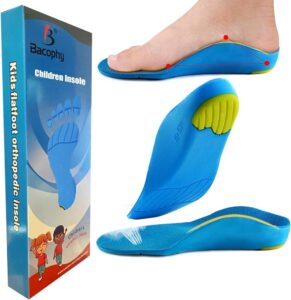


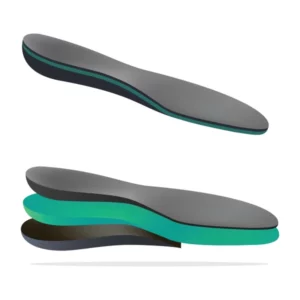
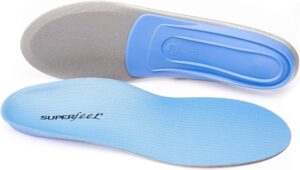


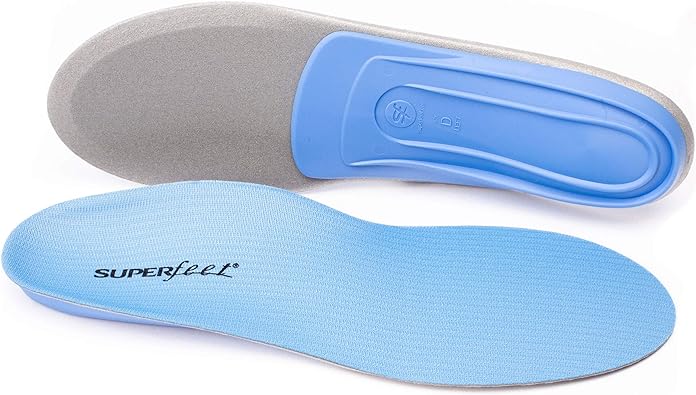
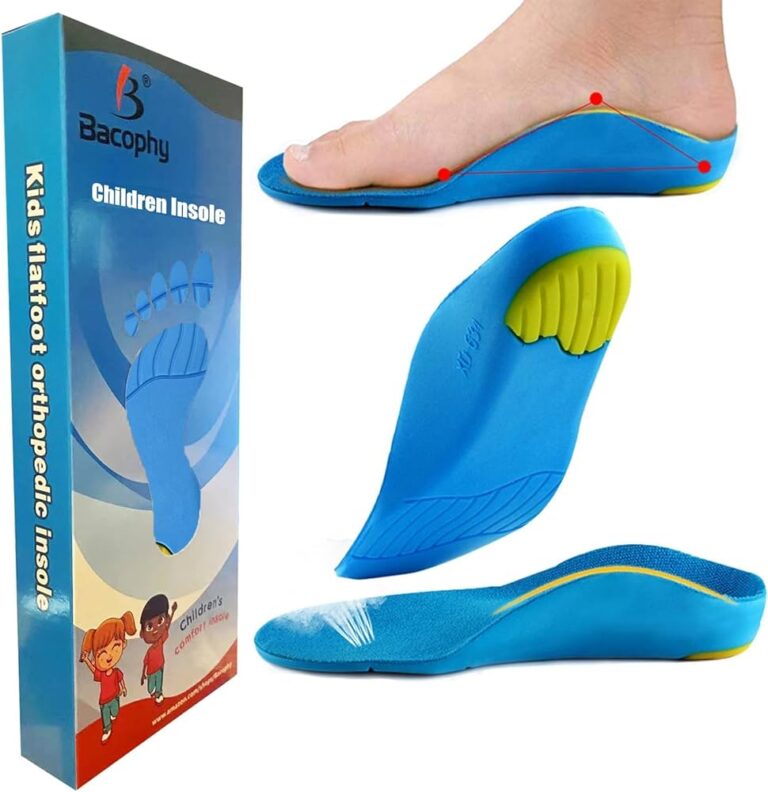
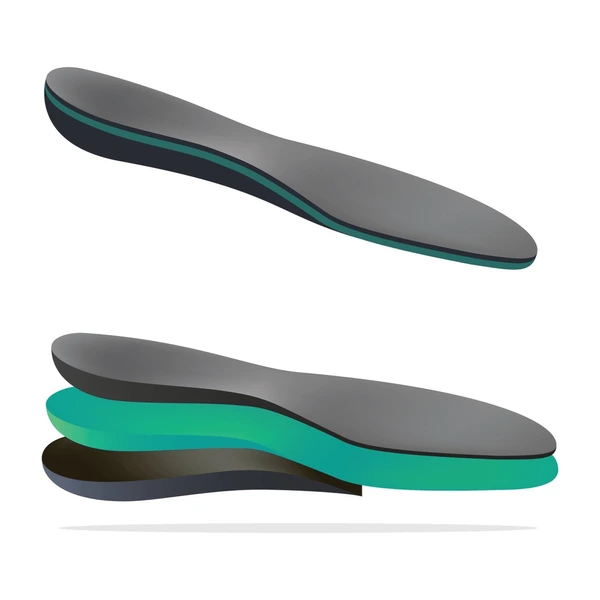

+ There are no comments
Add yours